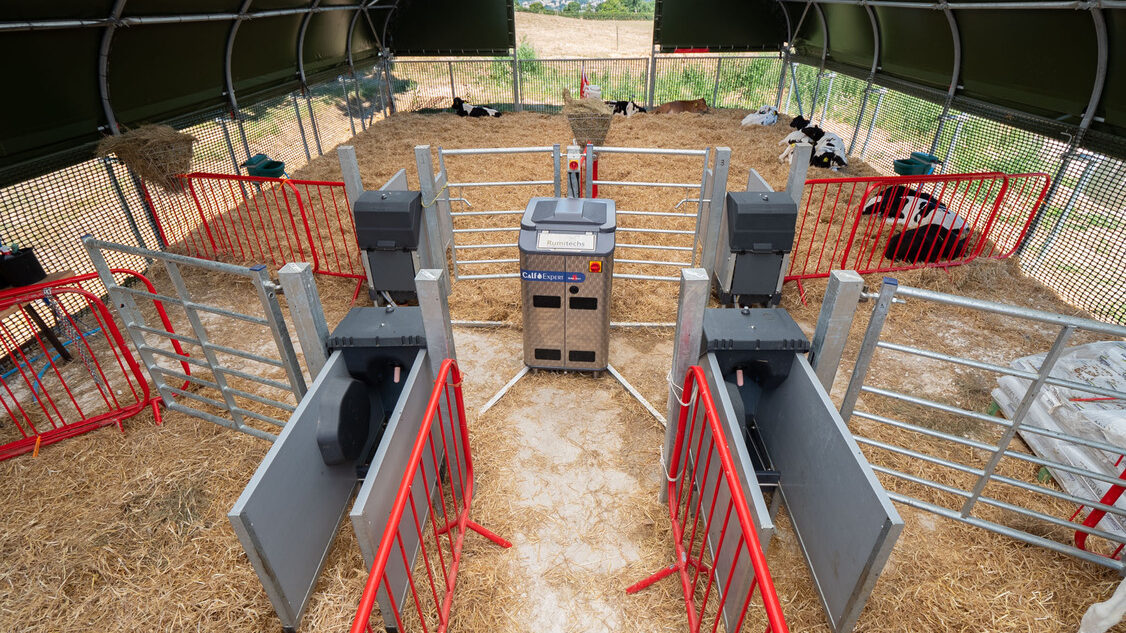Maintaining adequate ventilation and good airflow within livestock houses are two of the primary factors that are essential for maximising returns and results in commercial livestock farming operations.
The type of livestock structure as well as the mechanisms used for ensuring proper airflow and ventilation within the building play an important part in determining operational costs and yields generated from the commercial herds and flocks of animals farmed.
Modular livestock houses and Agri Span in particular, can offer optimal high-welfare conditions for rearing livestock by harnessing the stack effect to ensure abundant natural ventilation that ensures healthy yields while minimising operational costs.
Livestock farms that rely on traditional sheep houses and cattle barns are forced to incur higher costs by using mechanical ventilation systems. Even though natural ventilation is generally preferred, it is important to understand the role of the stack effect.
That’s because the stack effect helps meet livestock housing requirements and optimises performance. Read on to explore the stack effect and learn how it can be harnessed for establishing the ultimate conditions to raise livestock.
What is the stack effect and how does it function in meeting livestock housing requirements?
Agri Span, with sturdy side netting, allows for a free flow of fresh natural air into the structure while efficiently expelling the air that has already been circulated within the structure. This promotes abundant airflow and ventilation in two ways, through the stack effect and via wind-driven means.
With regard to the stack effect, the air that circulates within the structure warms up as a result of respiration and the body heat put out by the animals which initiates the stack effect—this warmer/stale air is less dense than the fresher/cooler air flowing into the building and therefore, naturally rises to the top of the building and causes a pressure difference that draws cooler air from the outside while the air that has been lingering dissipates.
This movement of air due to thermal and pressure differences is known as the stack effect and plays a crucial role in ensuring adequate ventilation within livestock houses, especially during calm days when wind-driven airflow is at a minimum.
In the case of Agri Span, the stack effect is used optimally with wind-driven ventilation to achieve the highest air quality and best air flows within the structure.
What are the benefits of the stack effect in shelters used for commercial livestock housing?
The stack effect, when utilised well, can offer bountiful opportunities for commercial livestock housing operations that are seeking to maximise yields by meeting any and all livestock housing requirements to create the ideal conditions and environments for rearing animals.
Here are a few main ways that utilising the stack effect can significantly elevate results:
- Moisture control
The buildup of moisture within the interiors of livestock houses can become a major issue that adversely affects commercial herds and flocks as this can provide a breeding ground for mould and bacteria that can, through exposure, have a harmful impact on the personnel who tend to the animals. The stack effect can ensure an efficient level of airflow to ensure that there is adequate moisture control.
- Herd health
Stagnant or lingering air can become stale and get concentrated with airborne pathogens and infections ranging from pneumonia, scours, navel infections, and more. This can especially hinder the growth and well-being of young stock such as lambs and calves and rack up treatment costs and losses from mortality. Through optimal ventilation realised through the stack effect, contaminated air is swiftly and continually expelled, promoting healthy growth and reducing the risk of diseases and the spread of infections.
- Housing comfort
Ensuring efficient ventilation by utilising the stack effect is crucial for preventing issues like respiratory diseases, heat stress, and poor air quality in commercial livestock facilities, establishing more comfortable and high-welfare conditions for the animals housed.
- Optimised airflow
The stack effect enables proper ventilation, which is crucial in livestock housing as it helps replenish oxygen, remove exhaled carbon dioxide, control temperature, eliminate stagnant air, and avoid unwanted drafts.
- Enhanced savings
Leveraging the stack effect to naturally ventilate buildings can also save money for livestock businesses as they don’t need to invest in other mechanical ventilation systems that could be costly to install, maintain, and operate, due to energy bills, etc.
Speak to a specialist provider and meet all of your specific livestock housing requirements perfectly
Agri Span by McGregor Agri is an industry-leading modular structure that is designed specifically for optimising livestock housing by effortlessly establishing high-welfare conditions for both the well-being of your animals and maximum yields and returns from the operation.
Speak to our team of specialists about the requirements of your livestock business and discover how to best address all your livestock housing requirements with the right structures for your needs.

James Noble
Assistant farm Manager, Heckfield Place
“In the traditional barn, we had seven-month-olds who were reaching 115 kilos, but in the Agri Span, they were reaching 150 kilos within sixteen weeks.”
